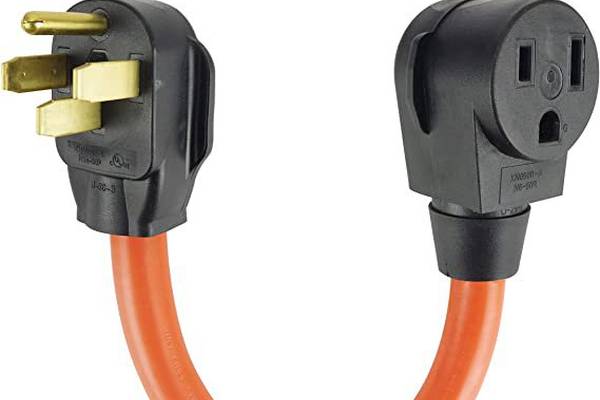
14-50 vs 14-50R vs 14-50P: Difference Between NEMA 14-50R & P
That is what NEMA stands for. it is the largest trade association for electrical equipment manufacturers. Just about every electrical piece of equipment gets a NEMA number. This association started in 1926 and establishes standards for electrical equipment
The difference is simple, basic, and full of common sense. The R stands for receptacle or outlet, and the P stands for Plug. These two pieces of equipment were and are made for each other. They will not work with any other piece of equipment.
To learn more about these two electrical items, just continue to read our article. It is filled with vital information to help you understand these items as well as use them properly. Take a couple of minutes to catch up on these electrical items.
What Does NEMA 14-50P Mean?

NEMA is explained in our introduction. It is the standard-setter for almost all electrical equipment. When you see the letters NEMA on a plug or receptacle, you know you are getting the best electrical equipment possible.
The 50 in the 14-50 tells you that you will need a 50 amp service. There is a 14-30 which would be made for 30-amp service. All those figures refer to is the type of 4-pronged plug that is needed to go into the proper 4 plug outlet.
The numbers also refer to the type of plug you need to buy. The plug should have 4 straight prongs on it with one being in a form of a semi-circle or half an oval.
Is There a Difference Between NEMA 14-50 And NEMA 14-50R?

The figure 14-50 can stand for both the plug and the receptacle. But when the numbers are applied to the latter, an R is placed there to identify it as the outlet needed for a 14-50P which is a plug.
Basically, the 14-50 stands for the number of prongs, their design, and the type of outlet they are to be plugged into. In other words, the 14-50 is the identification code so you know which plug goes with which receptacle. That is about the only difference.
You need to see the P to know you are buying the plug, and you need to see the R so you are buying its mate. Generally, this system is made for appliances that do not get unplugged very often.
14-50 vs 14-50R

There is no competition here. The two are one-half each of a whole. To make a match, you need a 14-50P to fit into the 14-50R to transfer power. There would be some competition between the 14-50 and 6-50 as the latter is for charging electric vehicles.
The former is more for a sustained 50-amp power supply. You should have a very tight fit when you place the 14-50p into the 14-50R. It will loosen up over time as you plug and unplug whatever device needs 50-amp service.
The difference between the 14-50 p & R and the 6-50 P & R is that the latter does not have a neutral wire. That wire is not needed when you are charging electric vehicles.
The neutral wire is needed when you are sending 50 amps of power to an appliance like a washer or dryer.
Difference Between NEMA 14-50R And 14-50P

The difference is found in the letters. The R stands for receptacle and the P stands for the plug. You should have no trouble finding these two items as the latter will have the prongs designed to fit the outlet.
You have to match up the two as any other plug or receptacle will not fit the formats of either 14-50 pieces of equipment. This may take a few minutes at the hardware or big box home improvement stores.
But if they are not close to each other, the store clerk should help you find them. make sure to check to see that both items say NEMA 14-50P and NEMA 14-50R before you get to the register.
14-50R vs 14-50P

There is no competition here either. These two items are one-half of a whole. When they go together you have power to the appliance or whatever needs a 14-50R outlet. It is hard to confuse them as they would be like any other plug and outlet.
Plugs are designed for specific outlets even when you are using 120 AC power. There is nothing special about either as they both need the same gauge of wire to connect them to the 50-amp power source.
That is what is going to be remembered the most. These pieces of electrical equipment need 50 amps of power running to and through them. They are set up like any normal plug and receptacle.
Will 14-50P Fit 14-50R?

Yes, they will. The reason we can say that is because these two pieces of electrical equipment are made for each other. They are not made for any other receptacle or plug.
Any electrician or hardware store clerk will tell you the same thing. This plug and outlet have a neutral wire that many other 220-volt plugs and outlets do not have. Or if they do, those prongs and inlets are designed differently.
Keep in mind that the first set of numbers before the dash indicates voltage & pole count while the second set of numbers after the dash indicates amperage. That should help you filter your search when you are at the electrical supply store.
Some Final Words
NEMA has been around for almost 100 years setting standards for electrical pieces of equipment. Their work helps make your home or RV safer. Their codes also help you determine if the handyman you hired knows what he is doing or not.
If you are not sure what type of plug or receptacles you need. There are charts on the internet to help you find the right one. Plugs and outlets are not all the same.

